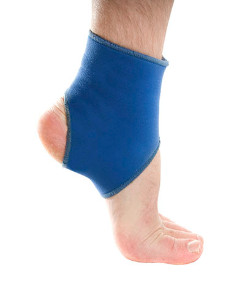 Cracked heels, while physically embarrassing, can also bring a great deal of discomfort and pain to the affected foot. Some common causes of cracked heels may include open-back footwear, weather, and improper skin care. To help remove the dry skin, use a filer and gently scrape the areas that are hardened. Exfoliating, washing, and thoroughly drying the feet may also be beneficial to treating cracked heels. Using a daily moisturizer can also help to ease the discomfort of cracked heels, and it keeps the skin hydrated. In order to safely treat and heal cracked feet, seek the care of your podiatrist.
Cracked heels, while physically embarrassing, can also bring a great deal of discomfort and pain to the affected foot. Some common causes of cracked heels may include open-back footwear, weather, and improper skin care. To help remove the dry skin, use a filer and gently scrape the areas that are hardened. Exfoliating, washing, and thoroughly drying the feet may also be beneficial to treating cracked heels. Using a daily moisturizer can also help to ease the discomfort of cracked heels, and it keeps the skin hydrated. In order to safely treat and heal cracked feet, seek the care of your podiatrist.
If the skin on your feet starts to crack, you may want to see a podiatrist to find treatment. If you have any concerns, contact one of our podiatrists from Foot Health Center of Merrimack Valley. Our doctors can provide the care you need to keep you pain-free and on your feet.
Cracked Heels
It is important to moisturize your cracked heels in order to prevent pain, bleeding, and infection. The reason cracked heels form is because the skin on the foot is too dry to support the immense pressure placed on them. When the foot expands, the dry skin on the foot begins to split.
Ways to Help Heal Them
- Invest in a good foot cream
- Try Using Petroleum Jelly
- Ease up on Soaps
- Drink Plenty of Water
Ways to Prevent Cracked Heels
- Moisturize After Showering
- Skip a Shower
- Keep Shower Water Lukewarm
- Don’t Scrub Your Feet
If you are unsure how to proceed in treating cracked heels, seek guidance from a podiatrist. Your doctor will help you with any questions or information you may need.
If you have any questions, please feel free to contact one of our offices located in North Andover, and Tewksbury, MA . We offer the newest diagnostic and treatment technologies for all your foot care needs.















